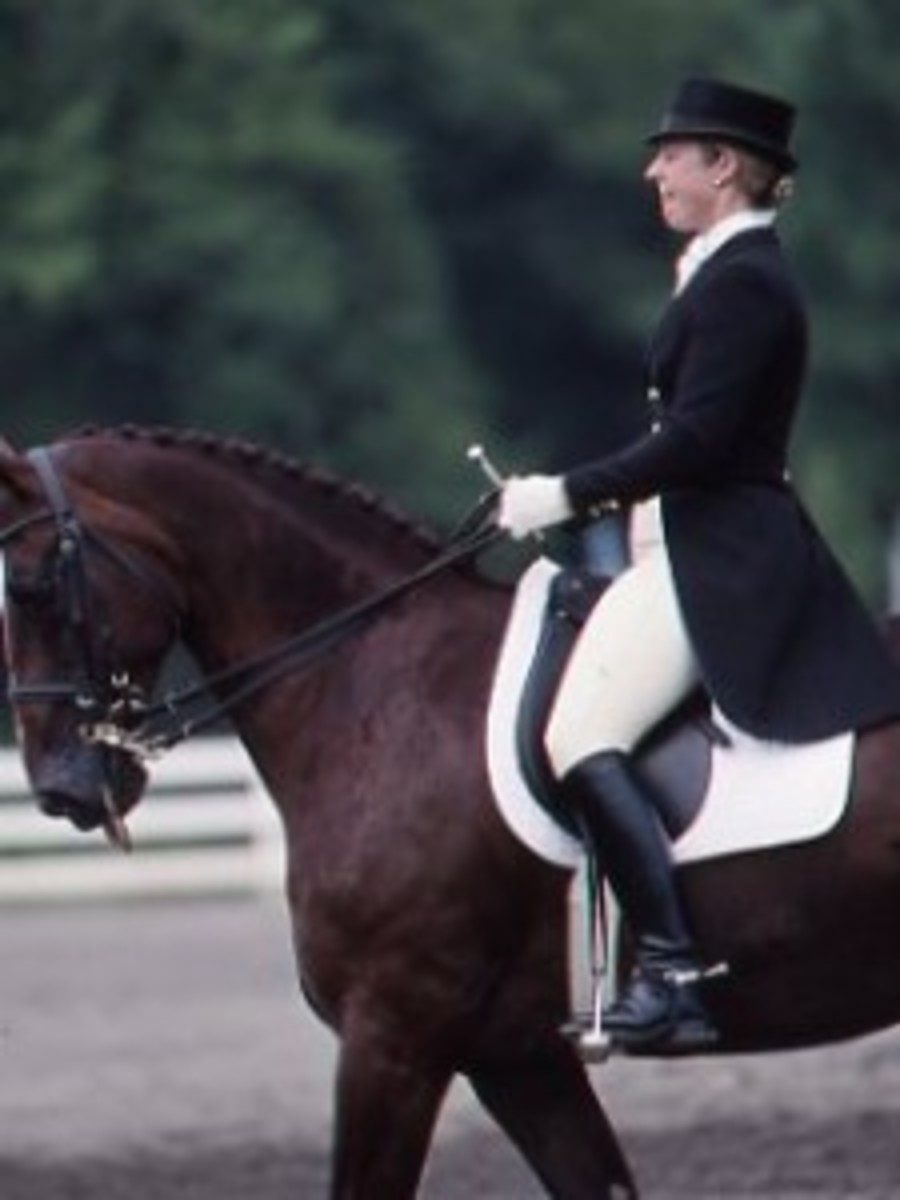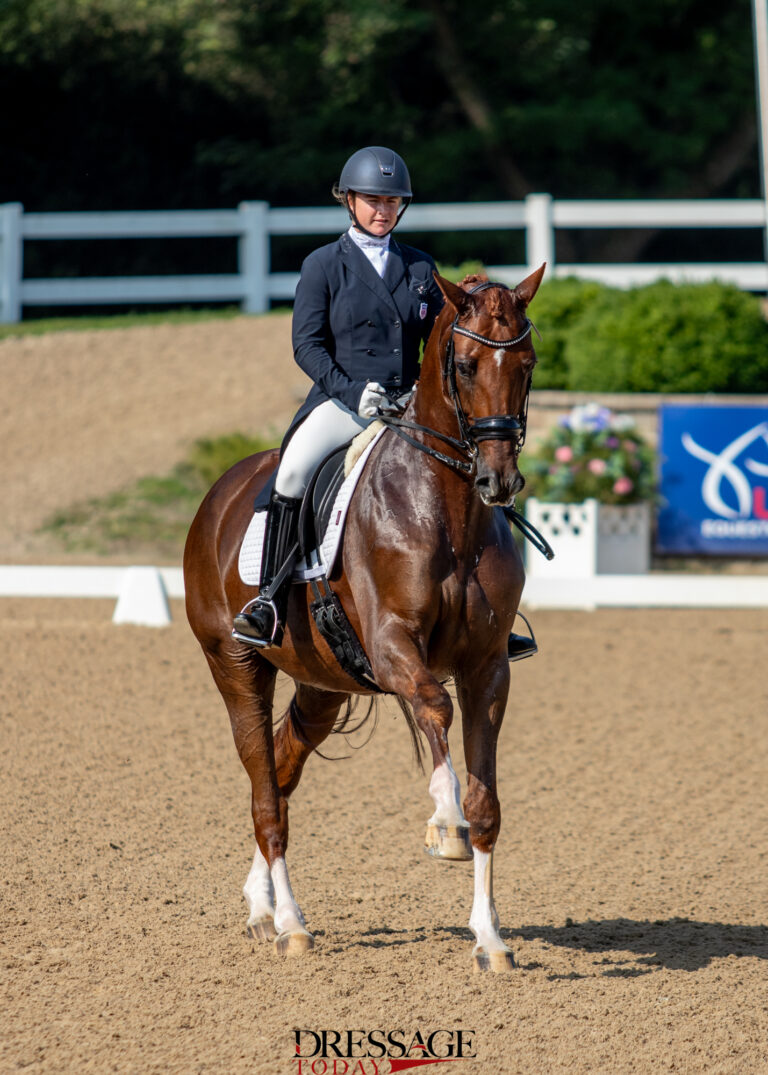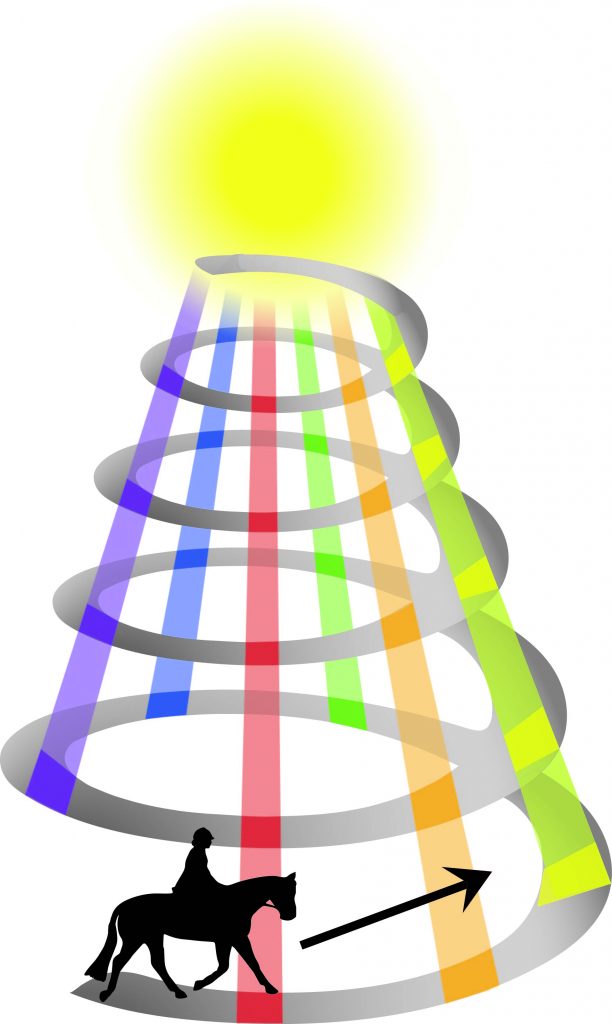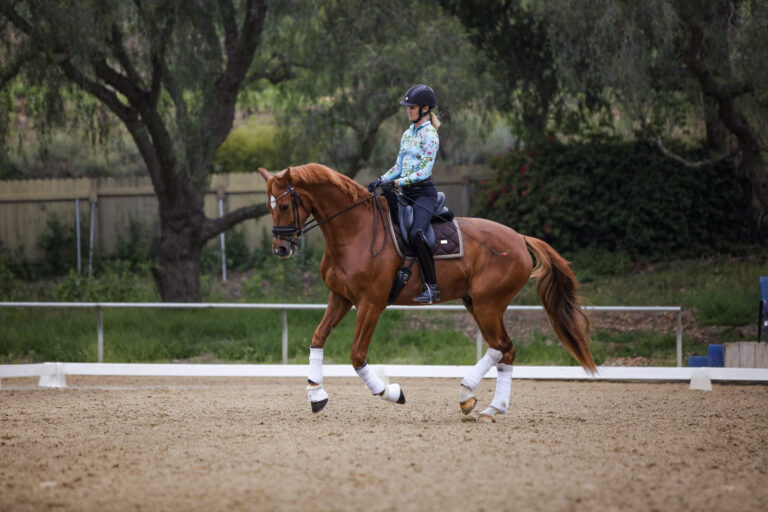
There is no substitute for what patience, time and proper training does for a riding horse. Quick fixes and short cuts won’t have any lasting effect. What I know now that I wish I’d known then: It is better to continually take baby steps in the right direction than three giant leaps forward and two back. Winning tests do not read 8, 8, 3, 4, 6; they read 7, 7, 7, 7, 7. Careful, concise and diligent training is the ingredient for success.
Most of us want to do Grand Prix so badly that we start thinking of piaffe and half passes, only to abandon the basics. Then, all of a sudden, we are stuck; nothing works anymore and, if this weren’t enough, we find that the horse starts to be against us, as well. Students at the FEI level often come to me asking for help with the one-tempi changes, for example. They have practiced them over and over, but they just won’t work. Finally, people hit the wall—the one-tempis are not improving, the horse starts to get fussy and tense and the canter loses its quality.
To solve their problems, I tell them to focus on the basics instead of on the movements. For example, focus on achieving a decent canter. Ask yourself: Is the horse active, rhythmic and through in the back? Is his canter pure and three-beat? Are all the elements of the Training Scale in place? If riders can answer “yes” to all these questions, I ask them to approach the flying changes again. The result is that, suddenly, most problems resolve themselves. Focusing on the seemingly easy and unspectacular has led them to manage the difficult and spectacular. The secret is to problem solve that way at all levels. Don’t follow the temptation to skip the basics. In riding, there is no substitute for a solid foundation of basics. Problems arise when we stray from the simple, looking instead for that something “extra.”
If the horse is rhythmic and relaxed, moving through the levels is quite easy. The horse must be confident in the rider and in his work to settle into a comfortable rhythm. When the horse and rider are relaxed, then the movements not only have grace and fluidity but also come easily. The horse is through in the neck, giving and submitting to the bend and contact. He is active behind and willing to engage the hind legs, not only pushing with them but carrying, as well. He is light in the hand, soft in the mouth, chewing the bit and flowing from hind to fore. These are the basics of a good gait just as much as a good half pass or piaffe.
Cesar Parra, DDS, MScD, competed as an individual rider for Colombia at the 2004 Olympic Games in Athens, riding Galant du Serein. Among his many national and international achievements is an individual silver medal at the 1999 Pan American Games in Winnipeg, Canada. In 2002, he represented Colombia with PF Robinson at the World Equestrian Games in Jerez de la Frontera, Spain, and in 2003, he placed fourth at the Pan American Games in the Dominican Republic. A popular clinician, he travels throughout the United States. Based in Whitehouse Station, N.J., and Jupiter, Fla., he and his family operate Piaffe Performance Farm, a training facility dedicated to the education of horse and rider.











